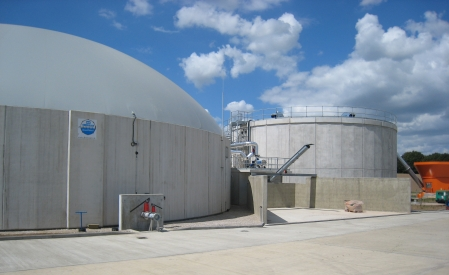
At Future Biogas’ anaerobic digestion (AD) facility in Taverham, Norfolk, ‘break crops’ (the secondary crop that is planted during a crop rotation) are used as biomass feedstock. Biomass is grown on approximately 400 hectares of land and delivered to the plant from a group of 20 farmers within the local area. The plant generates around 12,800 MWh of renewable electricity per year.
-
The break crops, for example maize, used at the Future Biogas' site, deliver a substantial yield of biomass and therefore the amount of both food and energy it is possible to generate per hectare farmed is maximised.
-
Other biomass crops such as grass, organic red clover, whole crop rye or triticale can also be used, and all can be grown using the natural fertiliser produced by the biogas process, known as the digestate.
-
Crops for anaerobic digestion provide a valuable break crop to arable farmers.
-
The use of break crops within agricultural rotation enhances subsequent crop yields, restores soil nutrients, reduces the occurrence of soil-borne diseases and improves soil and water quality.
-
They enable increased crop yields and reduced requirement for chemical fertiliser, meaning they are good for the farming business and for the environment.
-
Break crops will also help farmers meet the objectives of the Campaign for the Farmed Environment and other farming best practice guidelines.
